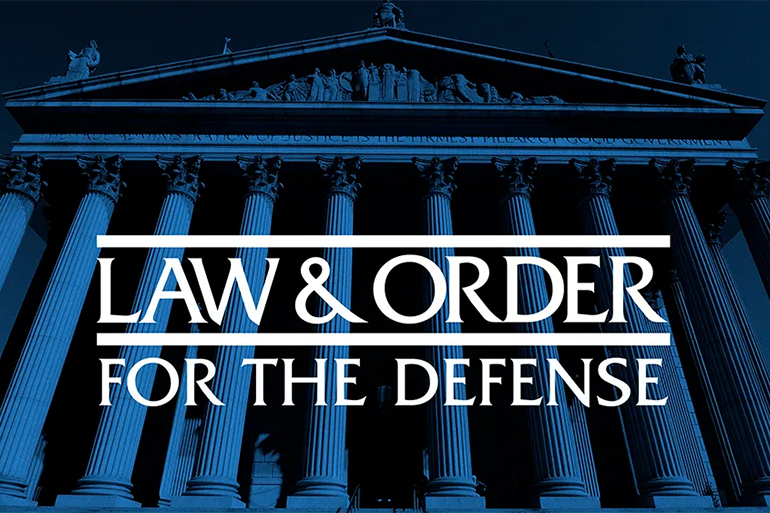
NEW YORK CITY – Covering a trial, civil or criminal, isn’t the exciting stuff you might imagine from watching Law and Order or a similar crime show. I use L&O as an example because it was filming just up the street from 60 Centre Street where the National Rifle Association case is being heard. During the lunch recess yesterday, we hustled in a pretty serious rainstorm toward a nearby pub, only to discover it was being used as a location for the show.
Nothing was happening. Crew members were standing around in the rain, trying to stay warm, prep equipment, and be ready for the next scene. I jokingly asked where I might find the craft services area and get a cup of hot coffee. A crew member pointed me up the street and said “good luck, we’re drinking it by the gallon trying to stay warm. It’s not working.”
Trials are a lot like making movies. Long periods of inaction followed by brief flurries of activity. The lawyers, judge and jurors are really the only people who are supposed to remain engaged at all times. But when attorneys are arguing minutia, it’s darned tough to stay engaged. And if the courtroom’s warm, it’s difficult to stay awake. That’s a challenge for everyone involved.
It’s different for witnesses. They’re kept in relative isolation until they’re called to testify. It’s not only tedious, it’s nerve-wracking.
Tuesday, for example, Esther Schneider, a witness for the prosecution, fell at the end of the day, so late that her cross examination was set as the first item of business on Wednesday. In the interim, she was instructed not to discuss the case, talk with others about her testimony, or otherwise consider the trial.
That’s not the homework assignment I’d want if I were a former NRA board member who stepped forward in an attempt to correct “irregularities” she saw. Especially with many of those “irregularities” form the base of corrective actions the NRA’s attorneys are using to make their case that problems in the internal operations of the organization have now been addressed.
Yesterday morning, court came into session at 9:30 as prescribed. Nearly an hour later, Schneider was still waiting for what she described outside the courtroom Tuesday as “the defense’s attempt to destroy me.” That was all she would say — correctly — but it’s easy to understand the feeling.
Gearing up emotionally to testify in a trial is difficult. It’s why you’ll hear voices crack, emotions rise, or see a sheen of perspiration across the forehead of people who have nothing to fear from the trial.
Schneider displayed none of those traits in her testimony, nor did Rocky Marshal during his time on the stand. But that doesn’t mean there weren’t some hidden butterflies. Not being nervous before testifying would display more control than most people possess.
Before a trial, a witness may joke about lawyers, trials, and courthouses, but the act of being sworn to offer only “the truth, the whole truth and nothing but the truth” is sobering. That’s why you see a variety of nervous responses from witnesses.
Fidgety ones aren’t necessarily hiding anything, they’re just not accustomed to being the focus of attention in a matter where someone’s future hangs in the balance. The stoic ones aren’t being icy, they’re trying to hold their emotions in check.
In the witness area waiting for your name to be called, you’re justifiably wondering what the heck’s taking so long. Yesterday, it was the continuation of a point raised by the Attorney General’s office regarding documents. Documents, they say, weren’t provided to them prior to the trial, but were referenced in the defense’s opening remarks.
Exculpatory and inculpatory evidence are a big deal in a trial. If prosecutors don’t provide evidence to the defense that might prove innocence, that’s a big deal. The same goes for the defense not providing documents to prosecutors, whether it helps or weakens their defense. It’s part of having a “fair trial.”
Judge Joel Cohen wasn’t thrilled about going down that road at the end of a very long day. He wanted to avoid it enough that he told both sides to try and work something out before he would be compelled to consider or issue an order to deal with the issue.
That’s part of the judge’s role in a trial. He’s not just the ultimate arbiter of points of law, he’s a combination referee, umpire, and traffic cop in what can occasionally resemble a contact sport. So far, the NRA trial has moved at a pace that may seem glacial to some, but is actually not far from the anticipated pace of a trial with so much at stake.
This trial has the potential to go for six weeks. That’s based on the witness lists and anticipated time needed for testimony and cross-examination.
In between those witnesses, there’s going to be a lot of those “discussions” regarding points of law, documents, and all the elements that comprise the basics of the case for the prosecution and the defense.
In some instances, the jury will have to be removed from the courtroom…another delay. When they’re brought back, Judge Cohen may occasionally be compelled to explain why there was a delay, the resolution, and what that will mean for the jury. They’ve already been told to disregard some testimony.
Real trials are nothing like movies or television. That having been said, the wheels of justice move slowly, but inexorably toward a conclusion.
Between the opening remarks and a jury’s verdict, a lot of lawyering and maneuvering goes on. It’s unreasonable to expect a case of this magnitude to stick to a tight timeline. But when it all shakes out, we will likely be surprised at how closely the original time estimate was to the actual time needed.
As the wheels turn, we’ll keep you posted.

